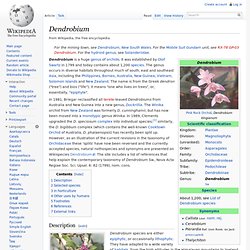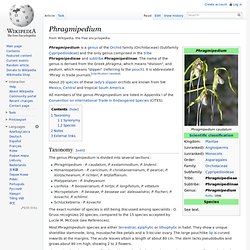

Milt.HajimeOno'Sensational.jpg (JPEG Image, 640 × 480 pixels) Picture/photo (Orchid Species): Sophronitis mantiquerae. A species orchid. Brief_orchid.jpg (JPEG Image, 500 × 757 pixels) - Scaled (80%) Miguel's Orchids. Oncidium Papilio (Psychopsis) Orchid Care - Carter and Holmes Orchids Culture. Oncidium Papilio (Psychopsis - The Butterfly Orchid) Culture Oncidium papilio (psychopsis) and its hybrids have a few preferences that when met will increase the strength of the plants and give you more flowers of higher quality.

Flowers of the standard color form are bronze and gold and very reminiscent of a butterfly, hence the nickname. The rare alba form is that which flowers as yellow and cream. Bloom stems are sequential, and flowers are produced generally one at a time with the future buds maturing behind the current bloom. Potting Media: You should use a media that drains well with ingredients like tree fern and charcoal that help "open up" the mix. Repotting: After removing the plant from its container, soaking it in a solution of Superthrive, Dyna-Grow KLN or another root growth stimulant for a few hours and then allowing it to dry somewhat for a couple of weeks out of mix before repotting it should help initiate sufficient new root growth. See also: Oncidium Sharry Baby 'Sweet Fragrance' - Orchidaceae. Dendrobium. For the mining town, see Dendrobium, New South Wales.

For the Mobile Suit Gundam unit, see RX-78 GP-03 Dendrobium. For the hydroid genus, see Solanderiidae. Dendrobium is a huge genus of orchids. It was established by Olof Swartz in 1799 and today contains about 1,200 species. The genus occurs in diverse habitats throughout much of south, east and southeast Asia, including the Philippines, Borneo, Australia, New Guinea, Vietnam, Solomon Islands and New Zealand. In 1981, Briegar reclassified all terete-leaved Dendrobiums from Australia and New Guinea into a new genus, Dockrillia. Description[edit] This genus of sympodial orchids develop pseudobulbs, which vary in length from under a centimetre (e.g. In selected species, the short, ovate leaves grow alternately over the whole length of the stems, in others, the leaves are bunched towards the apex of the stem (e.g. These orchids grow quickly throughout summer, but take a rest during winter.
Selected species[edit] In horticulture[edit] Phragmipedium. About 20 species of these lady's slipper orchids are known from SW Mexico, Central and tropical South America.

All members of the genus Phragmipedium are listed in Appendix I of the Convention on International Trade in Endangered Species (CITES). Taxonomy[edit] The genus Phragmipedium is divided into several sections : Phragmipedium : P. caudatum, P. exstaminodium, P. lindeniiHimantopetalum : P. caricinum, P. christiansenianum, P. pearcei, P. klotzscheanum, P. richteri, P. tetzlaffianum.Platypetalum : P. lindleyanumLorifolia : P. boissierianum, P. hirtzii, P. longifolium, P. vittatumMicropetalum : P. besseae, P. besseae var. dalessandroi, P. fischeri, P. kovachii, P. schlimii.Schluckebieria : P. kovachii The exact number of species is still being discussed among specialists : O. Phragmipedium caudatum is considered a complex, i.e. it could contain several species or subspecies, based on differences in flower size and color. Phalaenopsis. Phalaenopsis /ˌfælɨˈnɒpsɪs/ Blume (1825), known as the Moth Orchid, abbreviated Phal in the horticultural trade,[1] is an orchid genus of approximately 60 species.

Phalaenopsis is one of the most popular orchids in the trade, through the development of many artificial hybrids. Description[edit] The generic name means "Phalaen[a]-like" and is probably a reference to the genus Phalaena, the name given by Carl Linnaeus to a group of large moths; the flowers of some species supposedly resemble moths in flight.[2] For this reason, the species are sometimes called Moth orchids. They are native throughout southeast Asia from the Himalayan mountains to the islands of Polillo, Palawan and Zamboanga del Norte in the island of Mindanao in the Philippines and northern Australia. Orchid Island of Taiwan is named after this genus. Some Phalaenopsis species in Malaysia are known to use subtle weather cues to coordinate mass flowering. Classification[edit] The Pleione Website.